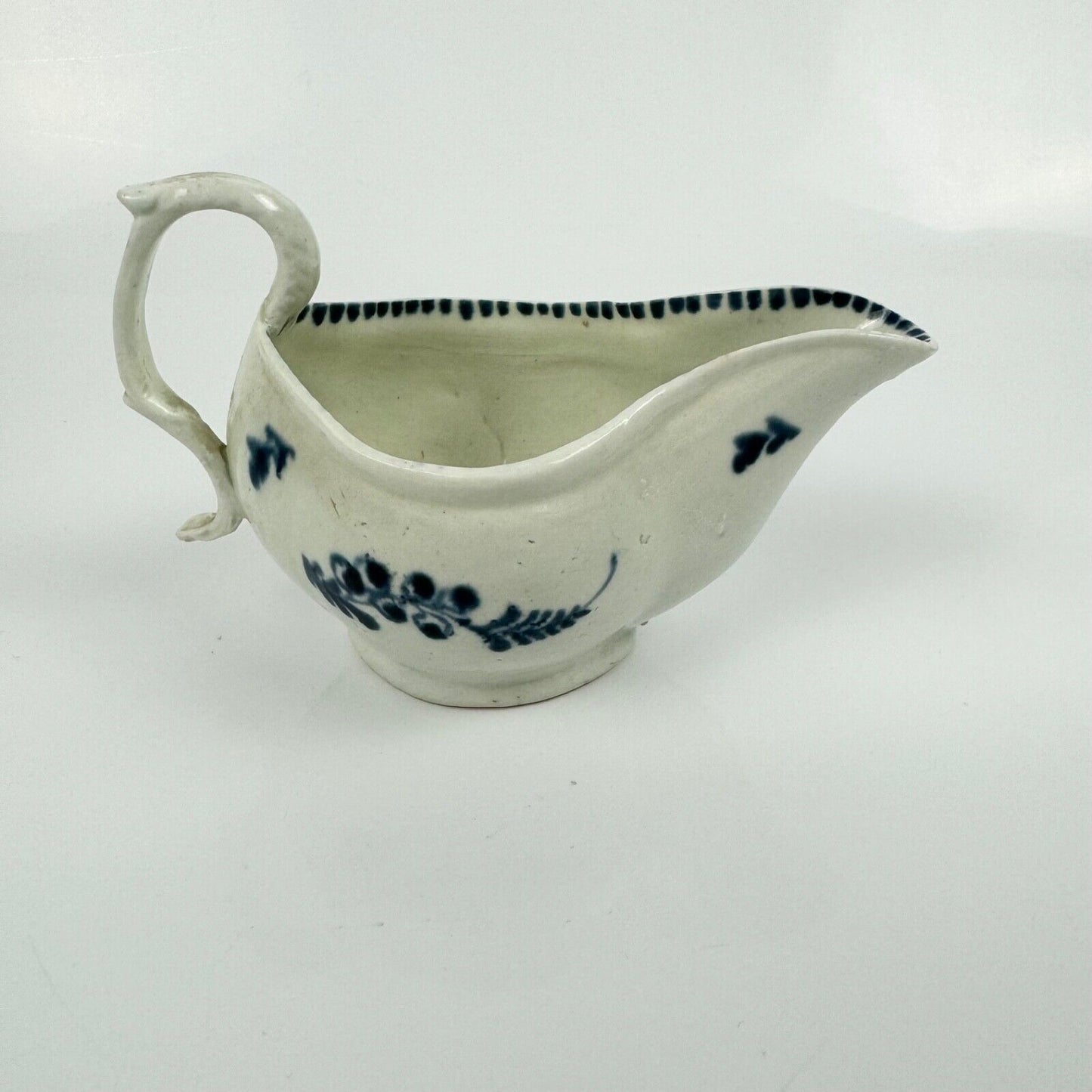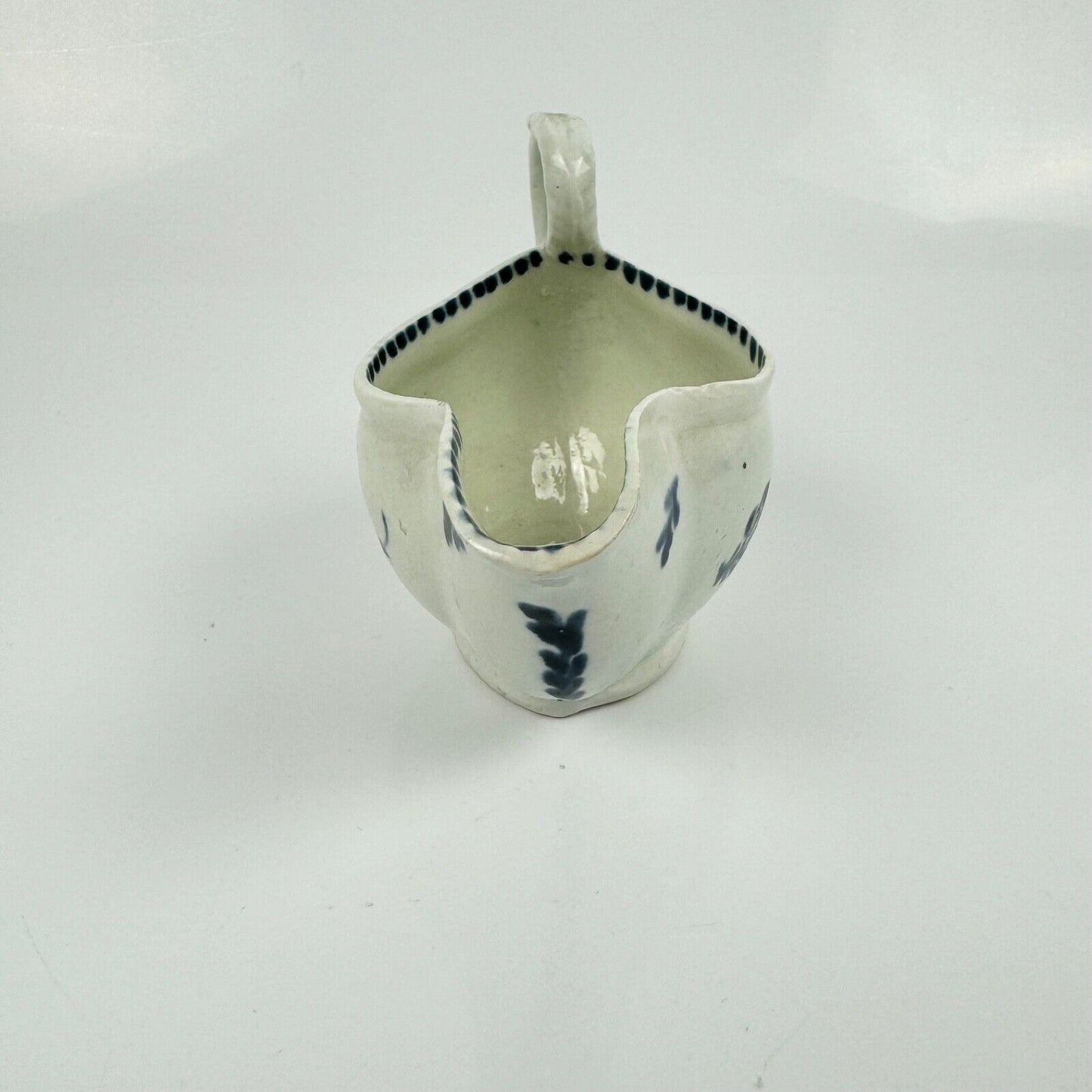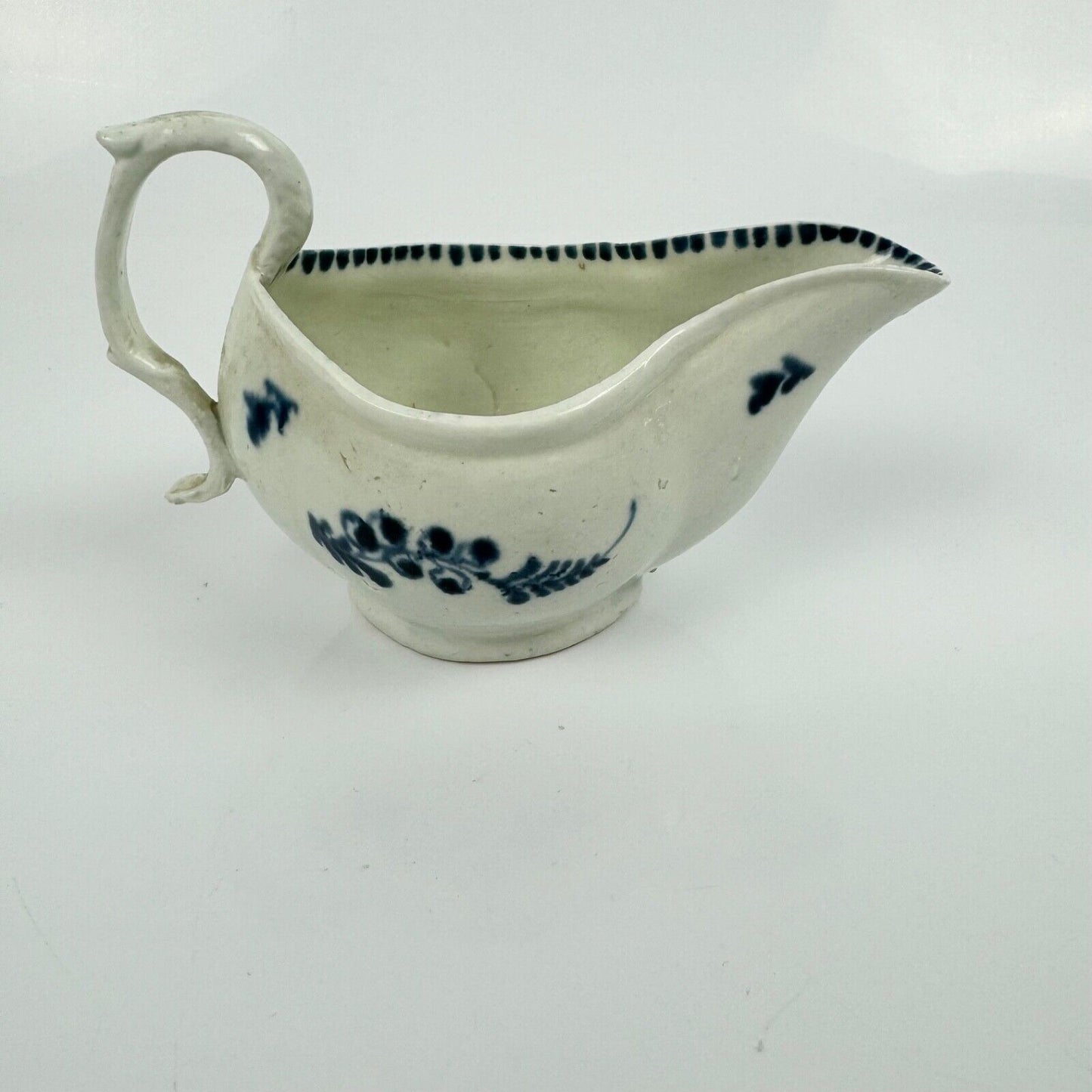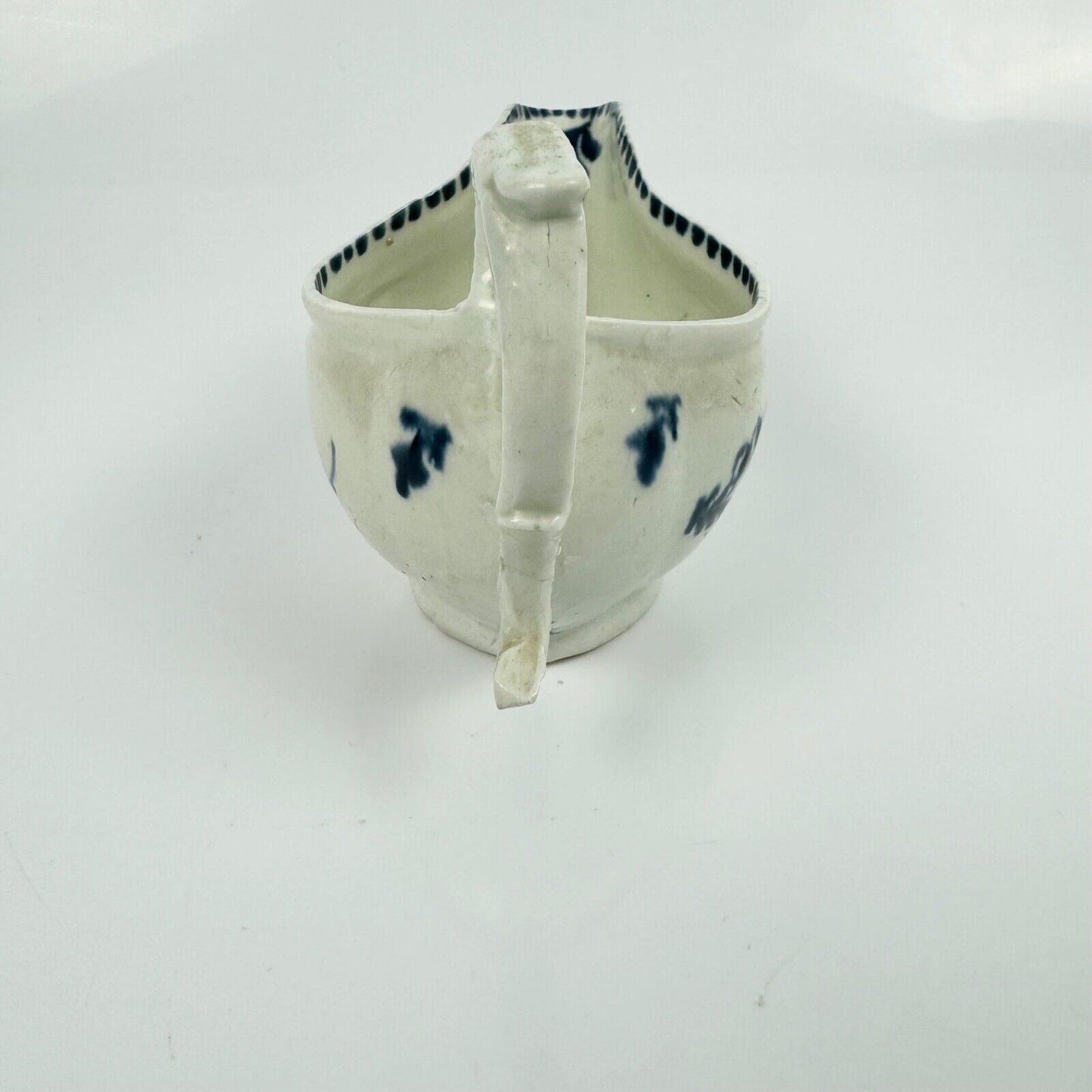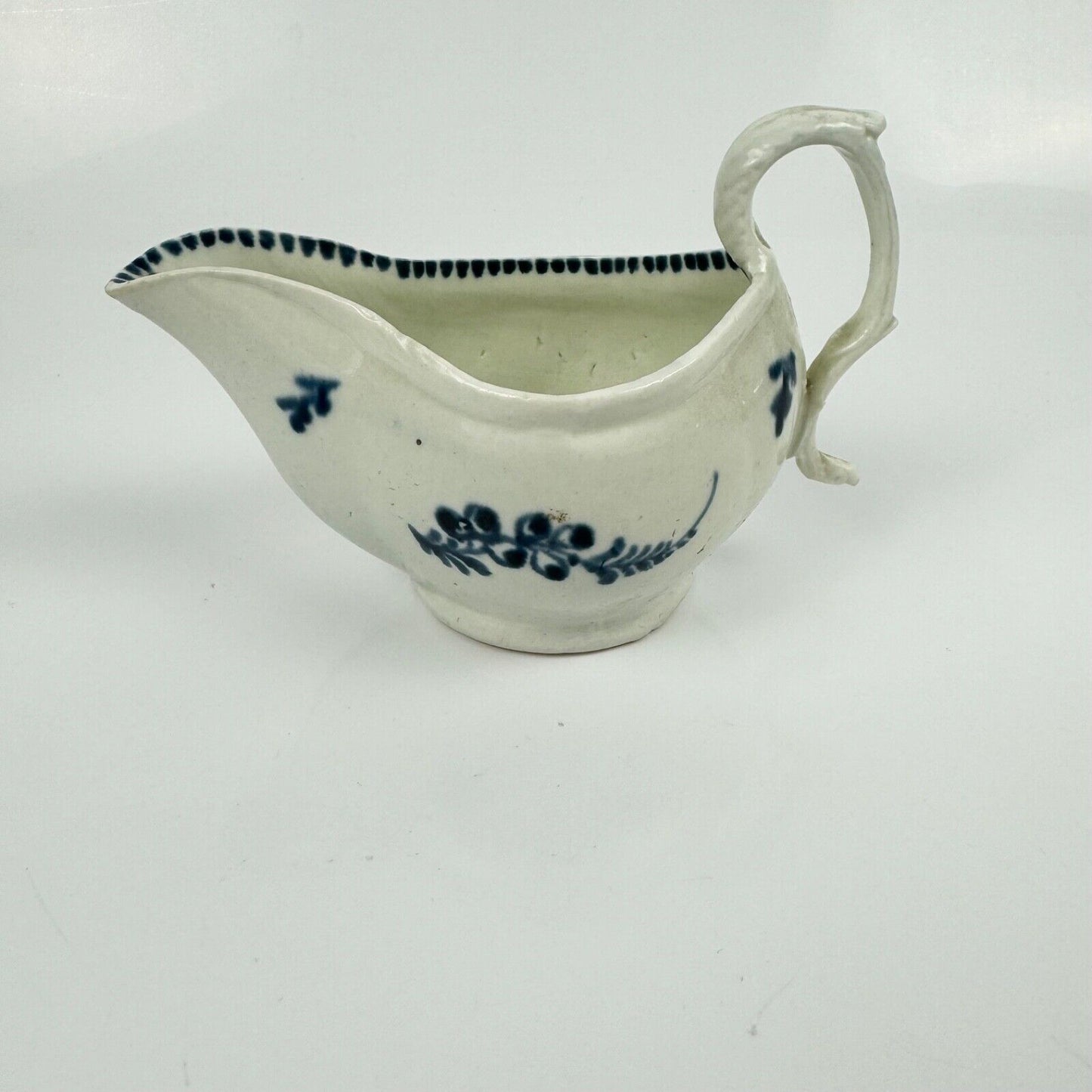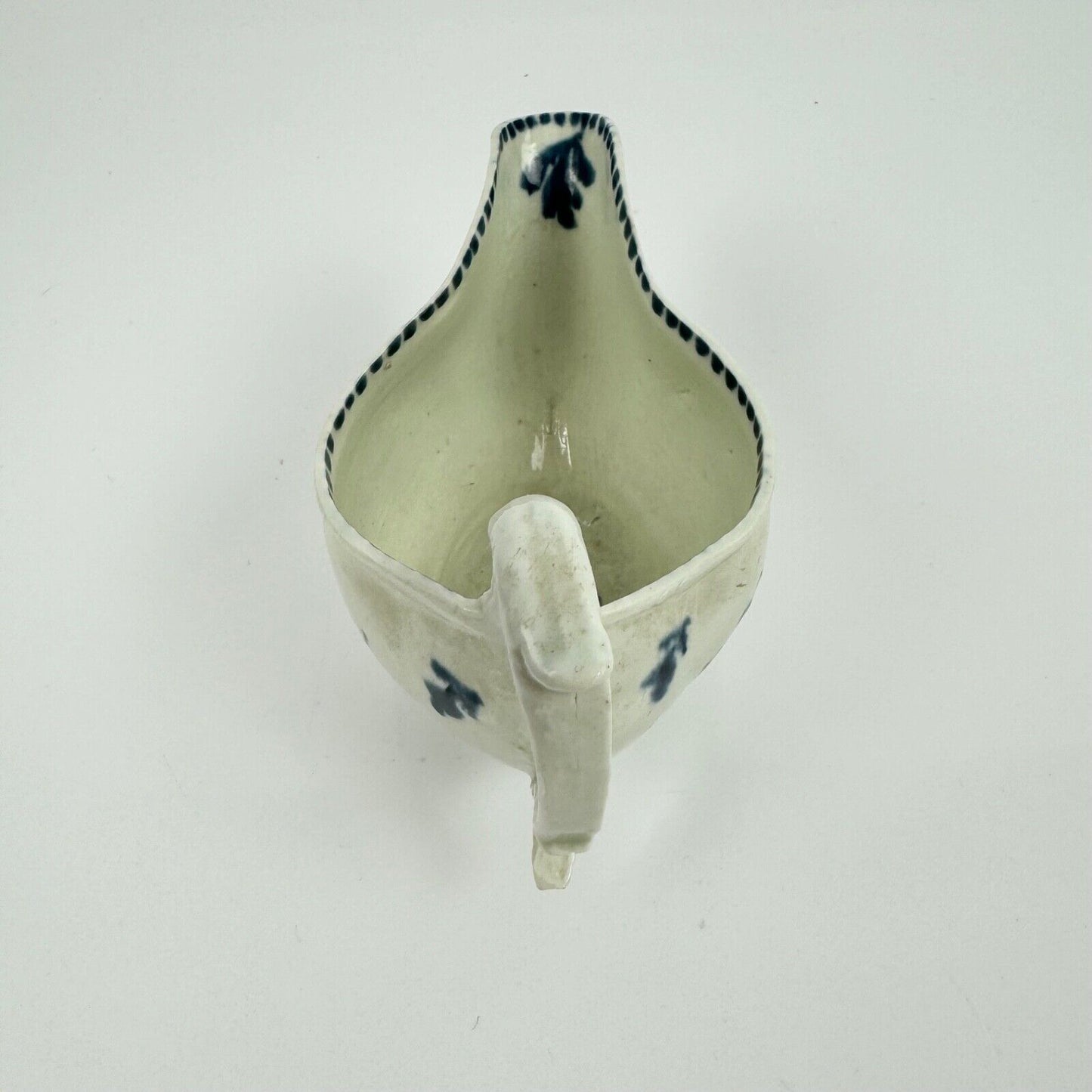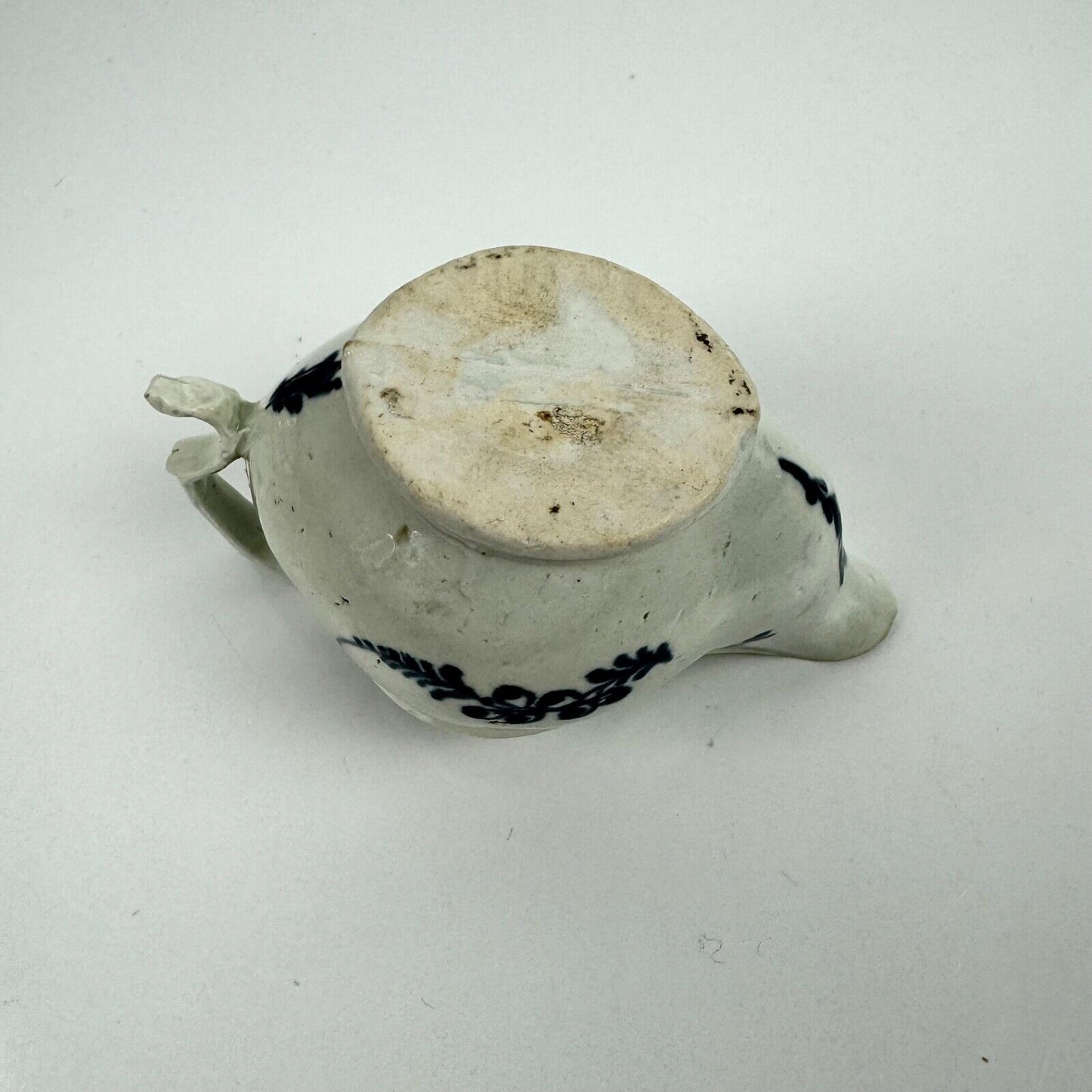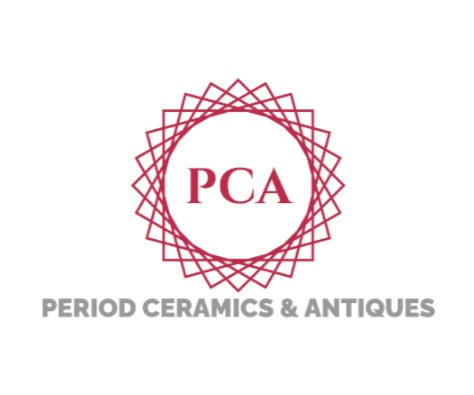1
/
of
7
Pennington Liverpool
A Pennington Liverpool blue/white creamboat in the Horsetail pattern. c.1780
A Pennington Liverpool blue/white creamboat in the Horsetail pattern. c.1780
Regular price
£265.00 GBP
Regular price
Sale price
£265.00 GBP
Unit price
/
per
Couldn't load pickup availability
Description.
A John Pennington sauce boat with a rare form scrolled handle, painted with the "horsetail" pattern. We cannot find any comparable handle for any of the Liverpool manufacturers, although the shape of the handle, the use of the horsetail pattern and the fact that the piece is evidently phosphatic suggests a John or James Pennington origin. The handle is most similar to the John Pennington version and it is to John, therefore, that we have attributed the piece.
Figure 8.68 of Hillis illustrates a John Pennington coffee pot painted with the Horsetail pattern, as here.
Condition.
In excellent antique condition. No apparent defects.
Dimensions.
13 cm in length
We do not offer combined purchase. The time it takes to source and pack items is considerable.
If the postage policy specifies that postage is included, we will send by tracked postage, rather than tracked and signed. If you wish for the latter, please let us know. There will be an additional charge which we will notify to you.
When we send by tracked alone the item will be at your risk from the point that we can prove, by means of showing a delivery confirmation, that it was delivered to your premises. Until that point, the item will be at our risk.
We are prepared to deliver all over the world, except (for obvious reasons, given the Russian state's unprovoked acts of aggression in Ukraine) to Russia.
We aim to ensure that our descriptions are absolutely accurate. Nevertheless, antique porcelain is never perfect. We use high definition photography with the aim of making the condition of any item extremely clear. Defects which are obvious in the photography we use are deemed to have been declared, even if we do not specifically refer to them in the description. An example of such a defect would be crazing-but we do not regard fine crazing as being a defect. If crazing is a particular issue for you, please let us know and we will then report as to whether there is any.
Restoration is sometimes extremely difficult to detect. We use UV light and transmitted light to check whether restoration has occurred. Sometimes, even those methodologies do not reveal restoration. If you are able, notwithstanding the definition, to show that restoration of a significant nature has occurred, we would obviously allow cancellation of the sale in such circumstances.
Share
